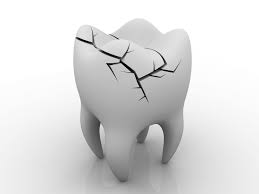Sometimes people never know they’ve chipped or broken a tooth. They bite into something yummy, and swallow the chipped part unknowingly. Others trip and fall on a sidewalk, concrete floor or the gym floor. These folks often know instantly that their teeth are chipped or broken. Others get socked by a ball, a kid or a door. However, it happens to you, don’t fret. It isn’t a total loss. There are healthy tips you can do at home to help maintain your oral health, before you seek emergency dentistry.
OK, What Can I Do at Home?
First of all, don’t panic. Rinse out the mouth with lukewarm water. Blood, if any, can be stanched using a piece of gauze. Gently press the bloody area for about ten minutes or until the bleeding stops. If you don’t have any gauze, a wet tea bag works just as well. Failing all that, grab a baby wipe. They are soothing and also perform the job well. If the tooth is chipped, this can be temporarily repaired using a dental cement found in most pharmacies. Swallow some ibuprofen for swelling and pain. Then apply a cold pack to the cheek and jaw area around the chip or break if swelling is present. See your dentist as soon as possible.
Healthy Tip: See if you can save the chipped or broken part of the tooth. There are things your dentist can do to save the whole tooth.
What Your Dentist Sees
When your dentist looks in your mouth and sees a chip or a crack, he or she will first get an X-Ray. If it’s not too bad, he or she will sand it down and/or polish it until it looks like normal. If a filling is necessary, a composite material will be used. Cracks can spread, though, so be sure and get it seen as soon as possible to avoid further damage, which might occasion a root canal and a crown.
Sometimes breaks cause pain right down to the nerve. If you suck in a breath of cold air, or eat or drink something hot or cold which causes pain, then your dentist may need to carry out root canal therapy in order to take out the nerve. Additionally, splits happen when either the tooth or the root decides to part company. Your dentist will remove first the root that might be damaged, occasioning a root canal. Then he or she will give you a crown to restore normal function to your mouth.
Not all dental problems are cause for panic. A few common sense actions to secure the area are all you need do until your dentist can take a look at it.
